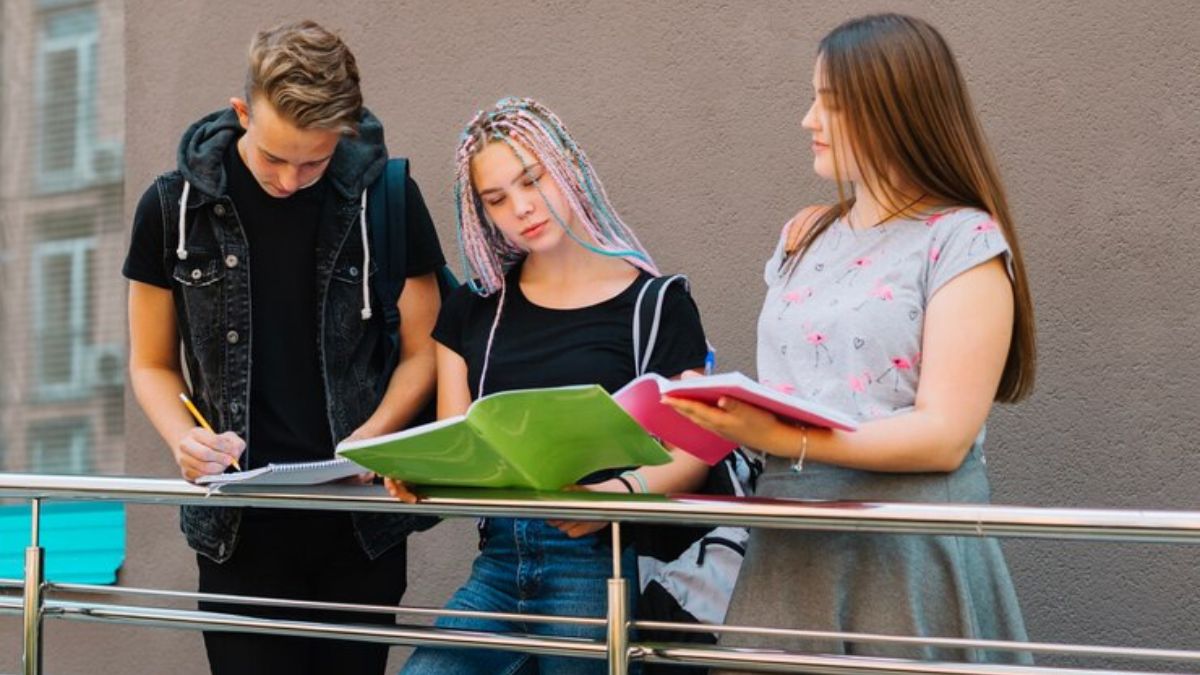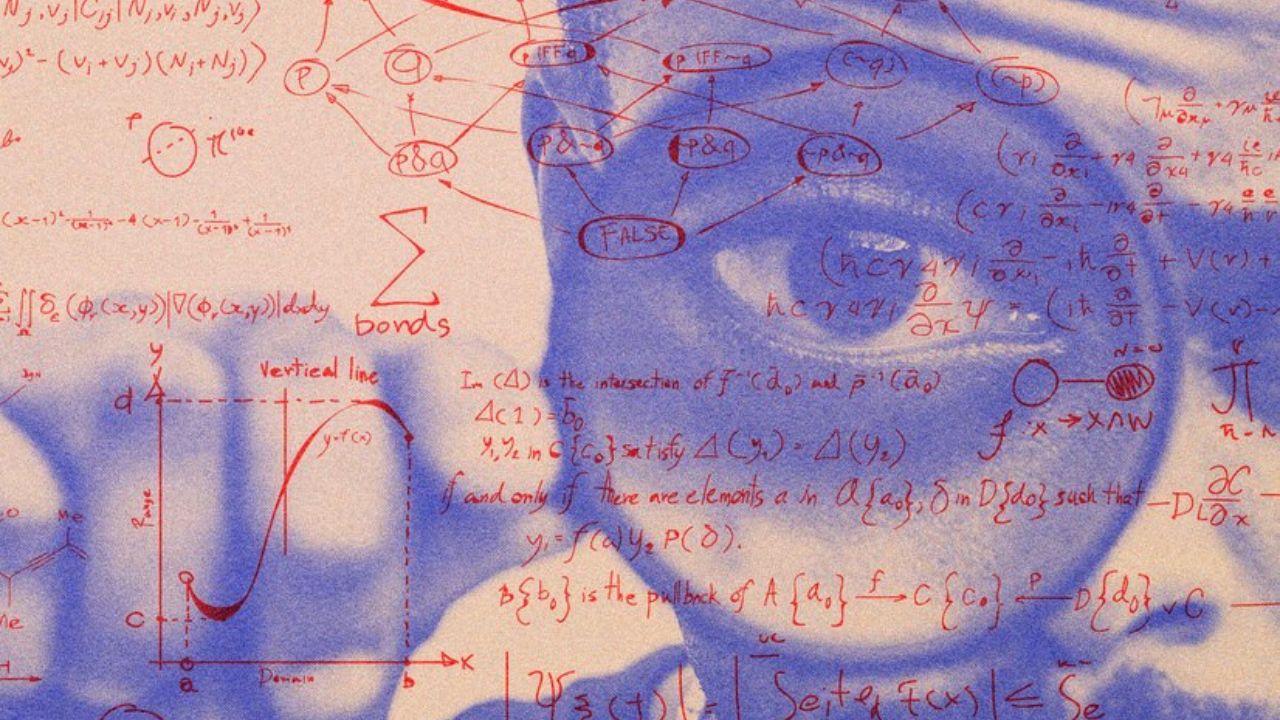EDUCATION
7 Top Arts Educational Schools in London Every Student Should Know About

London is the hub of numerous art educational schools that can help students who want to get a start in the art profession. It is the leader in creativity, innovation, and design, which is why it has become the first choice for students from all across the world.
According to a report by London & Partners, over 125,035 international students are studying in London, up 5.8% from last year. However, it is hard for students to find the best school for their art degree because, with art-specialised colleges, there are some more general universities which are providing the best art courses. To help you out, we come up with a list of the best arts educational schools in London you must know about.
Continue reading to learn more about these art schools.
List of 7 Best Arts Educational Schools in London
London takes pride in having world-class educational institutions specialising in art education and performance. These colleges and universities make art education more accessible for students who want to pursue careers in the art world. You can choose any of these institutions depending on your courses and personal preferences.
Nonetheless, some arts educational schools in London stand out. Have a look at the best art schools.
1. Royal College of Art
The Royal College of Art is one of the arts educational schools in London. The Arts and Humanities MFA program of this institute is a professional course designed for creative art practitioners. The prime aim of this programme is to create a collaborative community of artists who can explore how the arts and humanities address present and future challenges.
This program also offers students the flexibility to select elective units that align with their professional aspirations. The core courses provide a comprehensive exploration of art history, enabling students to develop a deep understanding of the subject. To further solidify their knowledge, students engage in various art assignments throughout the program. These assignments enhance their grasp of key concepts and practical skills. For additional support in completing these tasks successfully, students also seek assistance from art assignment writing services.
2. King’s College London
It is located in the centre of London City. The art program of this institution has the second-largest faculty, which makes it distinguishable from other arts programs. In addition, this art educational school collaborated with various cultural places such as Shakespeare’s Globe Theatre and the British Museum, allowing students to explore the culture around them.
Various arts programs are being offered for undergraduate and graduate students at this art college. Postgraduate students can also specialise in media, culture, or creative industry from the King’s College London.
3. University of Arts London
University of Arts London’s Chelsea College is offering one of the best art courses. The best part of this college is that it offers art courses up to the PhD level. Additionally, it provides a creative and critical learning environment for students to improve their artistic skills. The art course by Chelsea College aims to offer a real-world experience through organising presentations, exhibitions, publications, and screenings.
Moreover, the art courses at this college allow students to think creatively and encourage them to explore a wide range of areas of the art world, including sculpture, digital media, video, painting, acting, and drawings.
4. Goldsmiths, University of London
Goldsmiths is known for its creative students and faculty. This institution offers a wide range of art courses for both graduate and undergraduate students. However, it is difficult to get admission to this art college as it has a low acceptance rate of approximately 16.23%.
One of these best courses is the MFA program, which is designed to improve the artists’ motivation, self-reliance, and creativity. This course is split into two sections: in the first year, learners set their artistic goals, and in the second year, they work to expand their goals.
Furthermore, this course encourages students to explore contemporary art pieces and delves into their art history to understand its background from various art forms. The best feature of this program is that it focuses on a student-centred learning approach through seminars and personal art tutorials.
5. University of Westminster
The University of Westminster offers an innovative Fine Arts BA program that is mixed with the collaboration of media sciences. This program gives students the opportunity to explore various art disciplines and engage in critical debates. The thing that sets this art educational school apart from other institutions is that it allows students to bring their creativity to art studios.
Students can build their art studio at Harrow Campus and can learn by working with expert national and international artists. It also combines technical skills with creative arts and empowers students to work on polishing their imagination. Students who get a Fine Arts degree from this institution have an opportunity to improve their expertise in other fields.
6. University College London
The Slade School of Fine Arts of the UCL is considered one of the world’s best arts educational schools. This institution offers a diverse and collaborative environment to students, which allows them to become professional artists or researchers. Moreover, the art course from the Slade Art School encourages students to polish their artistic skills according to the contemporary art context.
The University College London offers an integrated art program focused on the interdisciplinary and collaborative approach. It is a two-year long program. In the first year, students learn through hands-on practice such as seminars, experiments, and more. The second year is based on the assessment exams and showcases what is being learned in the first year.
7. University of East London
The University of East London offers a fine arts course for graduate students. This institution provides an effective learning environment that encourages students to explore the contemporary arts. At the University of East London, students get expert guidance from professional artists, curators, or instructors and polish their artistic skills.
The BA Fine Arts program at this university covers various aspects of art, including painting, photography, filming, digital media, and virtual reality. It provides an opportunity for students to collaborate with professional artists through special events.
The best part is that if applicants don’t meet the entry-level requirements, there is a foundation year to prepare aspirants to meet the criteria. Students complete various assignments during this year. The expert staff of UEL makes this course exceptionally captivating for students. Students often hire top-rated assignment writing firms during this year to complete their writing projects successfully and be prepared for future endeavours.
What Qualifications Do Students Need to Study Art?
The qualifications you need to study art depend on the art education school you select and the degree level in which you want to get involved. However, according to the Uni Guide, students need to fulfil the following requirements:
- A diploma in the foundation of the arts
- A BTEC diploma in the arts and design
- A-level degree in the art or related field
Additionally, it is good to have a work portfolio along with these degrees and diplomas. This will strengthen your resume and impact positively on your application. Nonetheless, it is essential to explore the admission guidelines before applying to any art educational school in London.
What Career Prospects Are Associated with the Art Educational Degree?
Like any other degree, an art degree teaches you transferable skills. It is not only a vocational degree, but it offers tremendous opportunities for students to thrive in the art field. This education also prepares them to work in the professional art field. If you want to earn an art degree, then this degree opens doors for the following professions:
- Actors
- Photographer
- Director
- Filmmaker
- Professional artist
- Curator
Conclusion
London is the city where you can find numerous educational institutions offering the world’s best art degrees and courses. Students who are passionate about art come from all around the globe; however, finding the best college is their prime concern.
This guide can help them find the best arts school in London. Here, we have shared the best arts educational schools in London. All these institutions offer distinctive art degrees and courses that are designed to polish students’ artistic skills. We hope that our article will play the role of guiding light in pursuing your dream degree.
Author Bio
Harvey Clements is a passionate artist and a professional assignment writer who helps art students explore their creative skills. He knows how to intersect creativity and expressions. Through his writing and arts expertise, he brings artistic voices from imagination to real life. Simply, Harvey ignites inspiration among students with the magic of art.
EDUCATION
Current Best Practices for Writing a Literature Review in Dissertation Proposals

It is observed that the literature review in the dissertation proposal is like fitting a puzzle where every included research study takes students closer to the complete picture. However, it demands the right piece to be placed in the exact space, otherwise the whole scenery gets ruined. Thus, students must prepare a literature review which decides where their work fits in the particular field. This is why, a literature study should be created which addresses the gaps in studies, representing their case for achieving maximum score. That’s why the professionals in the dissertation help service propose to students some helpful strategies and practices for writing such a review. The practices that help students bring value to their studies and make their literature review exceptional are comprehensively stated below:
Practices to Effectively Write a Literature Review in Dissertation Proposals:
The inclusion of a literature review in the dissertation proposal should be approached by students in a structured manner. This way a high-quality study can be framed in that writing which level up the research and overall quality of the dissertation proposal. This ensures that the dissertation doesn’t miss any crucial information or studies. The fact that including numerous accurate and relevant studies in the literature review lifts the standards of the scholarly outlook says much about its weightage in academics. Hence, some of the best practices responsible for enhancing literature review for dissertation proposal are addressed below:
1. Express Evolution with Time
It is seen that the literature reviews offering the evolution of the field are appreciated more in the educational paradigm. This is because it defines the changes, ideas’ progression, and some evident comparisons. The mentioning of various stages with time helps in deducing what shaped the current outcome of the study. In this aspect, students should individually mention the contribution of every study when presenting their current literature review. However, if students get tangled in successfully tracking the timeline of major studies, talking to professional help with assignment service will offer some relief. Hence, it is right to say that expressing how the studies have evolved with time can provide a historical understanding of the field, which makes the research stronger and more credible.
2. Showcase Opposing Theories
It is correct that students often refrain from showcasing opposing theories in their studies, thinking that doing so will weaken their point and reduce the quality of their work. This is completely false and dichotomous, as most top-quality literature reviews address contradicting theories. Thus, students should not avoid or neglect these theories; in contrast, they should use them to stress their points. One reason for incorporating such contrasting points is that it showcases the present depth and wide coverage through added viewpoints. This means, that by covering opposing points students prepare a well-rounded and unbiased study. Hence, it is fair to estimate that addressing multiple opposing theories and connecting them to strengthen their points presents an effective literature study in the dissertation proposal.
3. Prefer Quality Sources Over Quantity
It is undeniable that various students misunderstand the expert’s suggestion of including numerous studies in the literature review and include countless studies irrespective of their relevancy, quality, alignment, accuracy, and much more. To deal with such circumstances, students are advised by professional essay writing help services to prefer quality sources to collect information rather than finding a plethora of studies. This way students can only include credible theories that contribute to the study. Additionally, students should understand that bringing accurate and well-aligned theories holds more significance than a huge list of irrelevant sources, provided just to fill the vacant space. Hence, it is right to state that selecting quality sources over quantity always benefits the literature review when eyeing scholarly success.
4. Address Limitations from Past Studies
It is a fact that addressing the limitations of the theories through past studies automatically raises the literature review standards in the dissertation proposal. Thus, providing weaknesses in the study, whether of methodology, scope or some other acts as an essential context in the review. This way of showing the exploration areas of previous studies is the right approach to address literature gaps.
For instance, if a study states that with the emergence of 4G technology, people will get the fastest internet, this theory can be challenged, as the technology was not as advanced then as it is today. This way, students can identify and address the limitations of studies in their chosen field. Hence, it is crucial to point out that addressing the limitations of past studies can make a visible difference in the literature review of the dissertation proposal.
5. Never Lose Sight of Objectivity
It is common for students to lose sight of objectivity when working with great involvement and dedication. Thus, they must apply critical analysis while maintaining complete objectivity, preventing them from including personal bias in the writing. The fact that including subjective thoughts and opinions in the content can drive it in the wrong direction reflects the value of refraining from them. Objectivity is the main reason behind the review’s credibility which helps create a well-framed and balanced dissertation proposal. However, discarding objectivity is not easy as it comes to the study naturally without any prior hint. This is why seeking advice from experienced professionals as in nursing assignment helper services assists in approaching such cases with unbiased thinking.
Conclusion
It is known to almost every student that preparing a comprehensive literature review for a dissertation proposal is a prominent step in initiating research. Thus, following some viable practices like expressing the evolution, showcasing opposing theories, focusing on the quality of sources, mentioning limitations in past studies, and not losing sight of objectivity when selecting studies. This way students can reflect on their critical thinking and upscale research-conducting ability through a well-curated literature review. Hence, it is accurate to say that some of the best current practices for writing a literature review for a dissertation proposal are mentioned, following this any student can create an impacting dissertation.
EDUCATION
The Equation of Harmony: x + 9 = 18 + -2x

Mathematics isn’t just about numbers; it’s a language that speaks to the very fabric of the universe. Every equation holds a story—a quiet piece of logic that reveals the balance hidden in chaos. One such snapshot of order is the equation x + 9 = 18 + -2x. While it may appear to be a simple algebraic expression, this equation serves as a gateway to understanding harmony, balance, and interconnected relationships.
Today, we’ll explore this equation—not just by solving it, but by unraveling the inner workings of its terms and revealing the timeless dance of equality that underpins even the simplest mathematical structures.
The Art of Balancing an Equation
At its heart, an equation is a scale. Imagine a perfectly balanced antique weighing scale. On one side, you have x + 9, and on the other, 18 + -2x. Together, they rest in equilibrium, their weights equal. The challenge is to adjust these components carefully, solving for the elusive x, the hidden value that restores balance.
x + 9 = 18 + -2x invites us to participate in this delicate dance.
But x isn’t just a number here. It’s a key, a puzzle piece that unlocks balance, showing us that every part of the equation is interconnected. To truly appreciate this process, let’s solve the equation step by step.
Solving x + 9 = 18 + -2x
Solving an equation involves untangling it, like carefully working out a knot in a string. Here’s a clear breakdown:
1. Isolate x on one side
To balance the equation, we first address the term on the left and the right. Since -2x feels like an oddly negative guest on the right side, let’s bring it over. To do this, we add 2x to both sides:
x + 2x + 9 = 18 + -2x + 2x
This simplifies to:
3x + 9 = 18
Feel that? The equation is starting to settle, revealing clarity as we group x together.
2. Remove constants from x
Now, the term +9 needs to step aside to give 3x room to breathe. Subtract 9 from both sides:
3x + 9 – 9 = 18 – 9
Which gives:
3x = 9
Notice how the equation begins to quiet, shedding unnecessary noise as we simplify.
3. Solve for x
Finally, divide both sides by 3 to reveal the value of x:
3x ÷ 3 = 9 ÷ 3
x = 3
And there it is. The enigmatic x has been uncovered, restoring harmony to the equation.
What This Equation Teaches Us About Balance
Now that we’ve solved the equation, you might wonder, what can a simple solution like x = 3 really teach us? The beauty lies in what the process reveals.
Balancing an equation is akin to balancing life’s demands. Each side might seem different at first glance—cluttered with terms, weighed down with numbers. But when you interact with these elements, simplify them, and focus on what matters, balance is always attainable. What appears complex can often transform into elegant simplicity.
A Metaphor for Harmony
Consider this equation as a metaphor for our day-to-day lives:
- The x represents a missing piece—something we’re trying to understand or achieve.
- The constants (9 and 18) symbolize external circumstances, the fixed elements we must adjust and adapt to.
- The process of solving it reflects the steps we take to find equilibrium in the face of challenges.
Just as adding 2x or subtracting 9 shifts the scales of an equation, every decision we make carries weight, influencing balance. The key is recognizing how intertwined all these elements are.
Why Algebra Matters Beyond the Classroom
It’s easy to dismiss algebra as simply “school math.” But algebra is so much more. It’s a framework that’s beautifully embedded in the design of our world. From predicting stock market trends to designing architectural marvels, algebra fuels innovation.
This equation, x + 9 = 18 + -2x, mirrors that simplicity-turned-sophistication. It exemplifies how even seemingly small problems hold powerful lessons. For businesses, it’s about finding the most efficient way to balance profit and expenses. For algorithms in AI, it’s about equating inputs and outputs. For individuals, it’s a reminder that balance—whether personal or mathematical—is always achievable.
Practical Applications of Finding Balance
1. Personal Finance:
Balancing your income and expenses can feel like solving an equation. By treating savings as the elusive x, you can add or subtract elements to strike financial equilibrium.
2. Time Management:
Think of your daily schedule as a scale. With work on one side and personal life on the other, harmony comes down to managing variables to create balance.
3. Business Optimization:
Startups frequently face the equation of scaling growth (x) while managing fixed resources. Solving for x becomes a practical metaphor for making impactful decisions.
Math, and algebra especially, isn’t bound to textbooks. Instead, it weaves its way into our lives, its principles offering actionable solutions and perspectives.
Finding Your Equation of Harmony
The equation x + 9 = 18 + -2x may appear as a simple problem with a single solution. But perhaps it’s also an invitation—a gentle nudge toward appreciating the interconnectedness of all systems, whether mathematical, personal, or professional. Every equation is a mirror. It shows us how pieces work together, urging us not just to find answers but to understand the process—a process that mirrors life itself.
What’s your x? What does balance mean for you?
Take a moment to ponder. Whether it’s time, goals, or a desire to learn something new, the act of solving can be as enriching as the solution itself.
-

 BLOG1 year ago
BLOG1 year agoElizabeth Huberdeau: Women Behind The WWE Superstar
-

 NEWS1 year ago
NEWS1 year agoMisty_moless_2: A Rising Star in the Digital World
-

 BLOG1 year ago
BLOG1 year agoite:mommyandlove.com/baby-names/: Discover Unique and Meaningful Baby Names
-

 GAMES1 year ago
GAMES1 year agoWest vs East Match Player Stats
-

 BLOG1 year ago
BLOG1 year ago3d659.com blog: A Resourceful Hub for Information
-

 BLOG1 year ago
BLOG1 year agoP72 National Pitch Competition: Nurturing the Entrepreneurs of Tomorrow
-

 TECHNOLOGY1 year ago
TECHNOLOGY1 year agoNpoint S/N 135064: Understanding Its Significance & Applications
-

 HOME1 year ago
HOME1 year agoSilly Wankok: The Surprising World Behind a Whimsical Name
